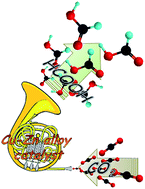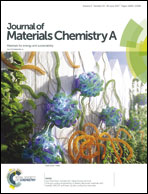Selective electro- or photo-reduction of carbon dioxide to formic acid using a Cu–Zn alloy catalyst†
Abstract
A copper-and-zinc (Cu–Zn) alloy material was synthesized using a vacuum sealing method, in which evaporated zinc was reacted with copper film or nanoparticles to form a homogeneous Cu–Zn alloy. This alloy was evaluated as an electrocatalyst and/or cocatalyst for photocatalysis to selectively reduce carbon dioxide to formic acid. Based on the optimised alloy composition, the Cu5Zn8 catalyst exhibited efficient electrochemical CO2 reduction. Furthermore, we constructed a photoelectrochemical (PEC) three-electrode system, in which the Cu5Zn8 film functioned as the cathode for CO2 reduction in the dark and strontium titanate (SrTiO3) served as the photoanode for water oxidation. The PEC system also selectively reduced CO2 to formic acid with a faradaic efficiency of 79.11% under UV-light and the absence of an applied bias potential. SrTiO3 particles decorated with nanoparticles of the Cu–Zn alloy also photocatalytically reduced CO2 to formic acid under UV-light. Isotope trace analysis demonstrated that water served as the electron donor to produce oxygen and organic molecules under UV light, similar to photosynthesis in plants. The Cu–Zn alloy material developed in the present study is composed of ubiquitous and safe materials, and can catalyse CO2 conversion by means of various kinds of renewable energies.



 Please wait while we load your content...
Please wait while we load your content...